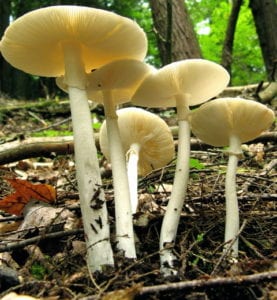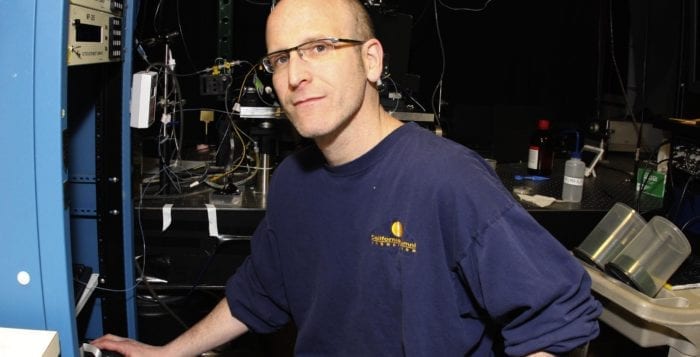By David Dunaief, M.D.
We are bombarded continually with ads suggesting that men should talk to their doctors about “Low T.” This refers to low testosterone. Is this all hype, or is this a serious malady that needs medical attention? The short answer is it depends on the candidate. The best candidates have deficient testosterone levels and are symptomatic.
Men do go through andropause or have unusually low testosterone (hypogonadism). The formal name for treatment is androgen replacement therapy.
The greatest risk factor for lower testosterone is age. As men age, the level of testosterone decreases. Respectively, 20, 30 and 50 percent of those who are in their 60s, 70s and 80s have total testosterone levels of less than 320 ng/dL (1). However, some of the pharmaceutical ads would have you think that most men over 40 should seek treatment. Treatments offered include gels, transdermal patches and injections.
While real estate is all about “location, location, location,” with testosterone “caution, caution, caution” should be used.
Who are the most appropriate candidates for therapy? Those who have symptoms including lack of sexual desire, fatigue and lack of energy. However, what is scary is that around 25 percent of patients are getting scripts for testosterone without first testing their blood levels to determine if they have a deficiency (2). A simple blood test can measure total testosterone, as well as free and weakly bound levels at mainstream labs.
The number of testosterone scripts increased threefold from 2001 to 2011 for men more than 40 years old (3). Either we have discovered vast numbers of men with low levels or, more likely, marketing has caused the number of scripts to outstrip the need.
What are the risks and benefits of treating testosterone levels? Is testosterone treatment really the fountain of youth? There are benefits reported for those who actually have significantly deficient levels. Benefits may include improvements in muscle mass, strength, mood and sexual desire (4). However, several studies have suggested that testosterone therapy may increase the risk of cardiovascular disease, including stroke, heart disease and even death. These are obviously serious side effects. It also may cause acquired hypogonadism by shrinking the testes, resulting in a dependency on exogenous, or outside, testosterone therapy.
When testosterone is given, it may be important to also test PSA levels (5). If they increase by more than 1.4 ng/ml over a three-month period, then it may be wise to have a discussion with your physician about considering discontinuing the medication. You should not stop the medication without first talking to your doctor, and then a consult with a urologist may be appropriate. If the PSA is greater than 4.0 ng/ml initially, treatment should probably not be started without a urology consult.
How can you raise testosterone levels and improve symptoms without hormone therapy? Lifestyle changes, including losing weight, exercising and altering dietary habits, have shown promising results. Let’s look at the evidence.
Cardiovascular risk
One study’s results showed that men were at significantly increased risk of experiencing a heart attack within the first three months of testosterone use (6). There was an overall 36 percent increased risk. When stratified by age, this was especially true of men who were 65 and older. This population had a greater than twofold risk of having a heart attack. This risk may have to do with an increased number of red blood cells with testosterone therapy. Those who were younger showed a trend toward increased risk but did not meet statistical significance.
When the patient was younger than 65 and had heart disease, there was a significant twofold greater risk of a heart attack; however, those without heart disease did not show risk. This does not mean there is no risk for those who are “healthy” and younger; it just means the study did not show it. This observational study compared over 50,000 men who received new testosterone scripts with over 150,000 men who received scripts for erectile dysfunction drugs: phosphodiesterase type 5 (PDE5) inhibitors, including tadalafil (Cialis) and sildenafil (Viagra). PDE5 inhibitors have not demonstrated this cardiovascular risk.
Unfortunately, this is not the only study that showed potential cardiovascular risks. A 2013 study reinforced these results, showing that there was an increased risk of stroke, heart attack and death after three years of testosterone use (7). Ultimately, it found a 30 percent greater chance of cardiovascular events. What is worse is that risk was significant in both those with a history of heart disease and those without. This was a retrospective study involving 1,200 men with a mean age of 60.
We need randomized controlled trials to make a more definitive association. Still, these are two large studies that suggest increased risk. If you already have heart disease, be especially careful when considering testosterone therapy.
FDA response
The FDA, which approved testosterone therapy originally, is now investigating the possible cardiovascular risk profile based on the above two studies (8). The FDA doesn’t suggest stopping medication if you are taking it presently, but it should be monitored closely. The agency, in the meantime, has issued an alert to doctors about the potential dangerous side effects of androgen replacement therapy. The FDA says that the use of testosterone therapy is for those with low levels and other medical issues, such as hypogonadism from either primary or secondary causes.
Conflicting data
Two newer studies contradict the previous findings and suggest that testosterone supplementation for those who are deficient may not increase the risk of cardiovascular events or death. However, both studies have their weaknesses. One found that, although the cardiovascular events and death increased over the first two months, over the medium (9 months) and long terms (35 months), the risks actually decreased (9). Weaknesses: There was an initial detrimental cardiovascular effect; the study was observational; and the population was not well-defined as to participants’ history of cardiovascular disease or not. The second study was retrospective or backward-looking in time (10). These studies may not change the FDA warnings. What we need is a large randomized controlled trial.
Obesity and weight loss
Not surprisingly, obesity is an important factor in testosterone levels. In a study that involved 900 men with metabolic syndrome — borderline or increased cholesterol levels, sugar levels and a waist circumference greater than 40 inches — those who lost weight were 50 percent less likely to develop testosterone deficiencies. Those who participated in lifestyle modification had a highly statistically significant 15 percent increase in testosterone (11). Also, when men increased their physical activity and made dietary changes, there was an almost 50 percent risk reduction one year out, compared to their baseline at the start of the trial.
Interestingly, metformin had no effect in preventing lower testosterone levels in patients with abnormal sugar levels, but lifestyle modifications did. These patients were relatively similar to the average American biometrics with prediabetes: HbA1c of 6 percent and glucose of 108 mg/dL; a mean of 42-inch waists; and a BMI that was obese at 32 kg/m2. The mean age was between 53 and 54.
If there is one thing that you get from this article, I hope it’s that testosterone is not something to be taken lightly. You can improve testosterone levels if you’re overweight by losing fat pounds. If you think you have symptoms and you might need testosterone, talk to your doctor about getting a blood test before you do anything. It may be preferable to try alternate medications that improve erections such as sildenafil and tadalafil.
References: (1) J Clin Endocrinol Metab. 2001 Feb;86(2):724. (2) J Clin Endocrinol Metab. Online 2014; Jan 1. (3) JAMA Intern Med. 2013 Aug 12;173(15):1465-1466. (4) J Clin Endocrinol Metab. 2000 Aug;85(8):2839. (5) UpToDate.com. (6) PLoS One. 2014 Jan 29; 9(1):e85805. (7) JAMA. 2013;310:1829-1836. (8) FDA.gov. (9) Lancet Diabetes Endocrinol. 2016;4(6):498-506. (10) Eur Heart J. 2015;36(40):2706-2715. (11) ENDO 2012; Abstract OR28-3.
Dr. Dunaief is a speaker, author and local lifestyle medicine physician focusing on the integration of medicine, nutrition, fitness and stress management. For further information, visit www.medicalcompassmd.com or consult your personal physician.



















 ‘Dishing Out Delicious’ is available at Barnes and Noble and www.amazon.com.
‘Dishing Out Delicious’ is available at Barnes and Noble and www.amazon.com.








